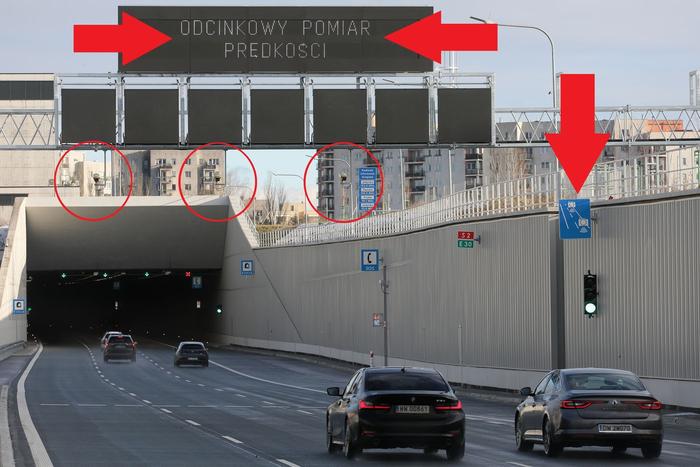Warsaw. The longest road tunnel in Poland is open. Note the segmental speed measurement!
In the outer walls of both aisles of the tunnel, every 125 meters, 19 alarm niches are located. In turn, in the internal walls there are nine niches, each every 250 meters, and in them evacuation passages to the adjacent aisle. At each of the niches, on the tunnel wall, there are signs informing about their "equipment". Each has an emergency telephone, a fire extinguisher and a fire blanket, and there are fire hydrants in the evacuation passages - on both sides. Additional alarm recesses are also located in front of the tunnel inlet and after the exit from the tunnel, and hydrants are also located in them.
See also: How to save fuel?
When using an emergency communication system, we do not need to identify where we are. Using the emergency telephone will be visible on the computer screens in the Tunnel Management Center, as will activating the manual call point (a small red box on the wall at the entrance to the niche) or taking the fire extinguisher out of the cupboard. This location system will facilitate the further actions of emergency services and will be more effective than alarming via mobile phones.

Tunnel in the eye of the cameras
The situation on each of the 2,335 meters of the tunnel will be monitored by 134 cameras non-stop. 22 are speed dome cameras mounted on the inlets and outlets of the tunnel and opposite the emergency passages. The others are fixed cameras, 104 of which are mounted along the inner walls of the tunnel and 8 at the inlets and outlets. The latter will acquire an image for the automatic number plate recognition system, integrated with induction loops inside the tunnel, used to determine the levels of freedom of movement or to collect statistical data on travel times.
What if traffic is blocked in the tunnel nave?
If any road incident occurs and as a result one of the aisles of the tunnel is blocked, the entrance to this aisle will be closed. First, a red light will appear on the traffic lights in front of the tunnel, then the barrier will close, and a message saying that the aisle is closed will appear on the variable message signs. Drivers who find themselves in a traffic jam in front of a closed barrier may not reverse or turn around. The release of these vehicles will be carried out under the control of the services conducting the rescue operation, provided that the traffic is directed by the Police.
Behind the barrier, and in front of the tunnel entrance, there is an emergency passage, on which quick-disassembly barriers are installed, the disassembly of which will facilitate the passage to the other lane of the road. The place in front of the tunnel entrance can also be used as a helipad.
At the lowest point of the tunnel, there is also a special gate that allows emergency services to drive emergency vehicles to the second aisle. It will only be possible after traffic has stopped in the adjacent tunnel aisle and when traffic is directed by the Police in consultation with the Tunnel Management Center dispatcher.
In justified cases, after blocking one of the aisles and receiving an order from the head of the rescue operation, a temporary change in the organization of traffic and redirection of vehicles to the other aisle can be introduced. Then the traffic will move in both directions. In the event of the closure of both aisles, cars will be directed to the routes designated by the head of the rescue operation, in accordance with the approved rescue plan.








